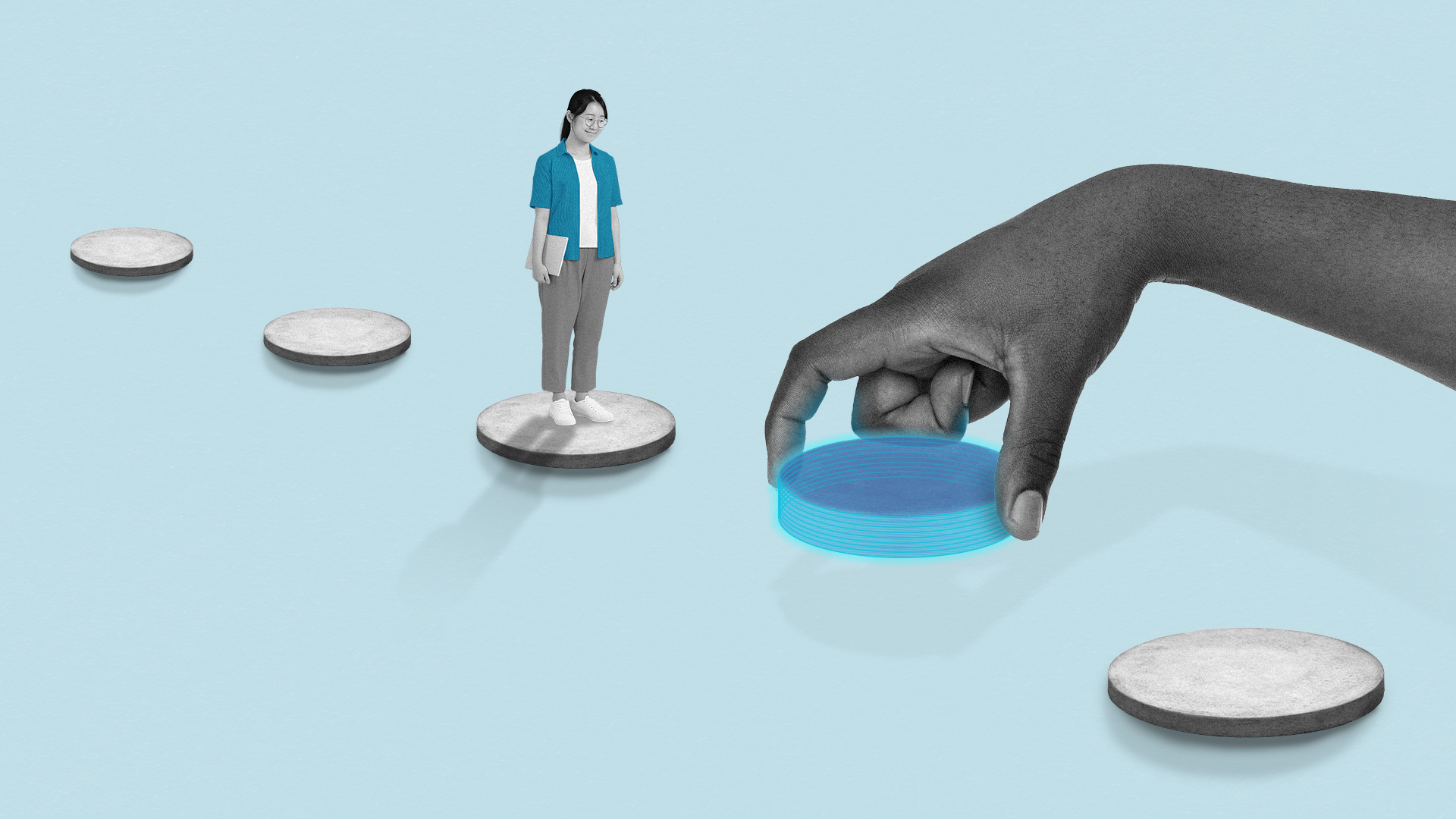As the traditional model of degree-based education encounters disruptions from non-degree credentials and AI-driven transformations, universities must adapt to move forward. This pressing need for adaptation was the focal point of a session from the spring Post-OPM Symposium that delved into insights shared by industry experts to explore the trajectory of higher education.
The session, titled “Where Do We Go From Here?”, was moderated by Lee Gardner, Senior Writer for The Chronicle of Higher Education, and featured a panel of experts: Patrick Brothers, Founder & CEO of Holon IQ; Jill Buban, Chief Growth Officer of EdPlus at Arizona State University; and Gautam Tambay, CEO and Co-founder of Springboard.
Panelists examined the challenges and opportunities in the post-degree landscape within academia and highlighted the potential for collaborative efforts among university networks to build and share capabilities.
We’ll take a deeper look into the insights gathered from this session and explore how the following topics can help universities thrive in a landscape that’s more adaptive, inclusive, and profoundly transformative:
- Public-Private Partnerships in Higher Education
- The Future of Higher Education and Credentials
- University Collaboration and Innovation
Public-Private Partnerships in Higher Education
Governments are exploring public-private partnerships (PPPs) in higher education to address financial constraints and skepticism towards traditional models. These collaborations between universities and private sector entities aim to drive innovation and meet educational needs.
In a previous article, we discussed changing perceptions of Online Program Management (OPM). In the “Where Do We Go From Here?” panel, Patrick Brothers highlighted the need to understand the evolving landscape, noting that traditional models and definitions of OPM are outdated. It’s time to reevaluate strategies and approaches.
As governments face financial challenges, institutions grapple with diminishing trust, and degrees lose credibility, the private sector thrives on digital solutions. Establishing robust partnerships between these groups is essential, yet their effectiveness in achieving university goals in a dynamic environment must be scrutinized. A nuanced understanding of capability gaps and shared risk-taking is critical for forging sustainable partnerships.
The Future of Higher Education and Credentials
The traditional university degree is facing challenges. Universities are no longer the only road to a degree, and non-degree credentials and skills are increasingly important in the workplace. Several key themes point towards a shift in how education is delivered, perceived, and valued.
Predicting Declining Enrollment and the Rise of Non-Degree Credentials—Experts predict a decline in university enrollments due to the rise of non-degree credentials and the impact of AI on careers. Traditional four-year degrees are becoming less essential as individuals experience multiple job changes. Flexible, bite-sized learning opportunities are expected to surpass traditional degrees by 2030. Universities must adapt to remain relevant in this evolving educational landscape.
The Value and Importance of Non-Degree Credentials—Universities’ monopoly on awarding degrees is diminishing, as employers increasingly value skills and competencies over traditional degrees. Alternative credentials like industry certifications and micro-credentials are gaining importance. However, concerns remain about their acceptance by employers. Jill Buban of EdPlus at ASU emphasizes the need for partnerships to support non-degree credentialing and calls for modular, stackable learning opportunities that align with industry needs. Universities must collaborate with companies to adapt their curricula for this evolving landscape.
The Role of Universities in a Shifting Landscape—Amid these shifts, universities stand at a pivotal juncture. Although traditional degrees continue to hold significant value, there is mounting pressure to evolve with the demands of the post-degree era. Buban emphasized the importance of universities embracing lifelong learning and providing a variety of modalities, such as online and blended learning, to meet the diverse needs of students.
“People are working longer,” Buban said. “The current generations might have 13 to 15 jobs in their lifetimes, and so institutions are going to need to look at how they can bring learners back through any modality repeatedly throughout their careers, and what kind of education they’ll need to provide over the course of that journey.”
The Human Element in Education and Work—Despite advancements in instructional materials, AI, and virtual realities, the human element remains crucial. Mentorship, connection-building, and experiential learning foster deeper engagement and understanding, which AI cannot fully replicate. As work evolves, the value of soft skills and interpersonal relationships in the workplace is increasingly recognized.
University Collaboration and Innovation
University consortia offer a collaborative approach to addressing industry challenges, with successful examples like the University Innovation Alliance. These consortia drive innovation and impact by fostering collaboration between mission-aligned institutions. Initiatives such as workforce education networks ensure educational offerings remain relevant to industry needs.
The potential for universities to merge resources highlights the need to rethink traditional models, despite challenges like competition and reluctance to embrace new credentialing methods. Embracing change and reimagining education as a continuum are crucial, supported by industry partnerships, emerging technologies, and regulatory frameworks.
What’s Next
As we navigate the uncertain terrain of higher education being shaped by alternative degree models and AI-driven advancements, it’s important to note that adaptability is key. The future demands an agile approach to education, one that embraces innovation, collaboration, and lifelong learning.
Public-private partnerships and the rise of non-degree credentials are pivotal in this transformation. Universities must foster these partnerships, modularize curricula, and offer flexible learning pathways to meet evolving workforce needs. Additionally, the importance of human connection and mentorship in education underscores the need to balance technological advancements with interpersonal skills.
While the landscape will continue to shift, the enduring value of education in shaping minds, fostering connections, and empowering individuals will remain. Since change is a rare constant, it’s our ability to evolve and grow that will define the future of higher ed.
Let’s talk.


